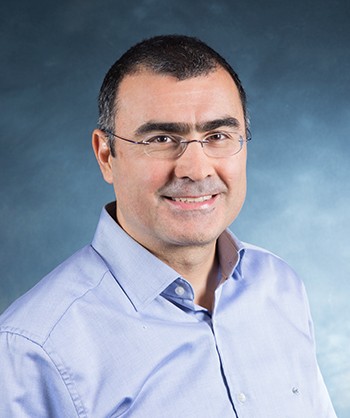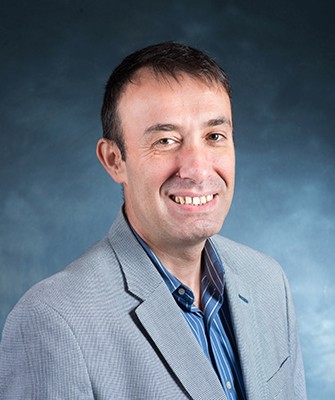Boston College economists Tayfun Sönmez and Utku Ünver have been working to ensure that policy makers have a way to ensure that the coronavirus vaccine is distributed equitably across all population groups, including the most disadvantaged communities.
States like Massachusetts and Tennessee have taken notice, incorporating their “reserve” system into distribution efforts to ensure the vaccine effectively reaches communities most in need.
The mechanism they’ve developed serves as a benchmark for equity as states seek to distribute vaccines fairly to all people in need. While it cannot overcome the myriad political and supply chain issues that have arisen, they note, it is a lever that policy makers can use to guide decisions across the entirety of a vaccination initiative.
Their work on vaccine allocation is just the latest in a series of projects focused on pairing resources with recipients during the pandemic. At first, Ünver, Sönmez, and fellow BC Professor of Economics Bumin Yenmez, in a joint paper with MIT economist Parag Pathak, developed a new mechanism to equitably distribute ventilators and proposed therapeutics.
Since then Sönmez, Ünver, and Pathak have been communicating and collaborating with various groups of bioethicists, clinical care physicians, and policy makers. Their latest work seeks to provide health officials with a tool to ensure the delivery of a vaccine to all sections of the society.
On December 4, the group delivered a keynote presentation program “COVID-19: Priorities in Health,” part of a two-day online conference that focused on vaccine allocation and social justice. The virtual event was hosted by Boston College, as well as Ariadne Labs, the Harvard T.H. Chan School of Public Health, the International Society for Priorities in Health, MIT, O’Neil Institute/Georgetown, The University of Pennsylvania’s Department of Medical Ethics and Health Policy, and the Leonard Davis Institute of Health Economics.
As the researchers expected, the distribution of safe and effective COVID-19 vaccines has confronted constraints—such as production bottlenecks or supply chain delays—issues that will extend the amount of time before complete demand can be met, according to researchers. Those supply limits lead to rationing.
In collaboration with Pathak, Sönmez and Ünver have written several new policy reports that show how vaccines can be allocated in ways that reduce inequities. More specifically, vaccine allocation needs to actively respond to disadvantaged populations – particularly racial and ethnic minorities – already hard hit by illness, deaths, and unemployment when compared to their wealthier, white peers, they say.
“One concern is that although disadvantaged communities carry most of the COVID impact burden, they will not be able to receive their share according to either metric fast enough in the rollout of vaccines,” said Ünver, whose December 4 remarks were aimed at a wide-ranging audience of policy makers, public health workers, community leaders, activists, researchers, news media, and the general public. “Thus, we argue that a reserve allocation can alleviate their burden to some degree.”
He added: “The goal from our point of view is to explain to practitioners and state health department representatives how using the economic ‘reserve’ framework outlined in our recent paper, can provide equitable access to vaccines to ‘worse-off communities’ – as defined under several criteria – and promote a technically transparent implementation guided by sound bioethical principles.”

Tayfun Sönmez

Utku Ünver
The researchers have developed a mechanism to allocate vaccines that includes a “reserve” system that sets aside a percentage of available vaccines for communities that fall under socio-economic indices such as the Area Deprivation Index or the Social Vulnerability Index.
Sönmez and Ünver discussed two of their recent policy papers they have co-authored with colleagues: “Rationing Safe and Effective COVID-19 Vaccines: Allocating to States Proportionate to Population May Undermine Commitments to Mitigating Health Disparities” and “What Prioritizing Worse-Off Minority Groups for COVID-19 Vaccines Means Quantitatively: Practical, Legal and Ethical Implications.”
Their current study simulates National Academies of Sciences, Engineering, and Medicine guidelines for distribution of the COVID-19 vaccine. To adjust to demand outpacing supply, NASEM determined prioritization phases of the whole population based on the risk groups of individuals depending on their professions, ages, health status, and other demographics.
NASEM also adopted the recommendation from the BC economists, Pathak, and their co-author, University of Pennsylvania bioethicist Harald Schmidt, that distribution employ a reserve allocation method for the hard-hit/socially vulnerable areas the researchers have outlined in their recent working papers.
Ünver and Sönmez said the central questions are: which groups are most at risk and how can researchers objectively identify them in a standardized manner? The ADI, developed by University of Wisconsin researchers, and the SVI, developed by the Centers for Disease Control and Prevention, are the two leading indices that measure disadvantage. SVI uses “minority percentage of a geographic region’s population" as a direct component, while all other 14 components of SVI and all 17 components of ADI are socio-economic measures. NASEM recommended SVI to determine at-risk groups.
“ We find in the simulations that if there is no reserve set aside for disadvantaged areas, although minority communities start off receiving their population share from vaccine allocation over time, that share is nowhere close to their proportion of COVID-19 fatalities, of 49 percent. ”
The BC economists ran simulations that tested both indices for their effectiveness in reaching the most vulnerable populations.
"We find in the simulations that if there is no reserve set aside for disadvantaged areas, although minority communities start off receiving their population share from vaccine allocation over time, that share is nowhere close to their proportion of COVID-19 fatalities, of 49 percent,” said Ünver.
Furthermore, without a reserve, after 48 million doses of vaccine are allocated, the share to minority populations falls below their population share of up to 34 to 39 percent and remains lower until the end of vaccine rollout of 323 million vaccines in the United States, Ünver said.
Simulating the effect of a 10 percent reserve for the most-disadvantaged quartile in each state, the economists tested both the SVI and ADI indices. While pairing both indices with a reserve appeared effective, they found the SVI can deliver more vaccines to at-risk communities. However, no matter which index is used, the disadvantaged communities – both those made up of racial minorities and those that are predominantly white – will be fully offered vaccines when 260 million units are rolled out, around 65 million vaccines before the entire U.S. population is innoculated.
While SVI has the potential to be more helpful than ADI in the minority impact dimension, both are much better than not using any reserve, said Ünver. Moreover, ADI does not have a racial component in its calculation, and therefore may be less prone to a legal challenge than a system that incorporates the SVI.
“Prior to our efforts, a reserve system has never been used for rationing of medical resources in a pandemic” said Sönmez. ”Due to the urgency of the need, our efforts have already started bearing fruit in states such as Massachusetts and Tennessee, which have adopted reserves in their Covid-19 vaccine allocation policies. Our hope is the reserve system will eventually become a mainstream tool helping achieve compromise outcomes that help maintain the social fabric."
Ed Hayward | University Communications | December 2020




